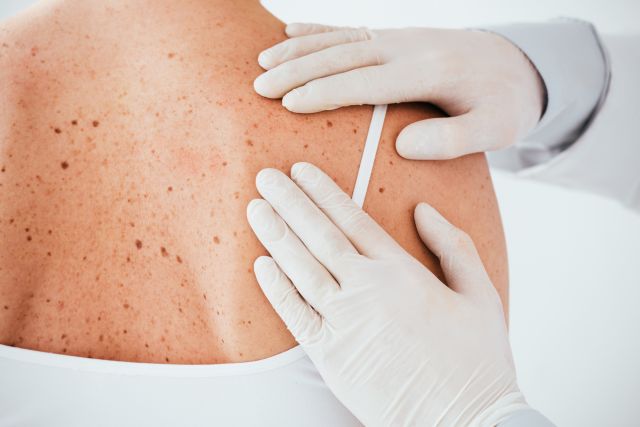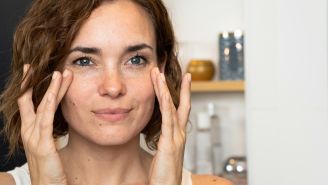You may be able to outlive melanoma—the most serious type of skin cancer—by doing one simple thing: seeing your doctor regularly.
Find top doctors in your local health network with this simple tool—and get better care.
Researchers from Henry Ford Hospital in Detroit reviewed the cases of 251 white patients who were diagnosed with melanoma between 2001 and 2007. The average age of the patients was 60, the typical age when someone's diagnosed with this disease.
What they found in these old records was that the risk of dying from melanoma plummeted 70 percent among patients who had seen their family doctor or a specialist sometime in the five years before their cancer diagnosis. What's more, the researchers found that visiting a specialist prior to the diagnosis seemed to reduce the risk by 90 percent. Even those who had preventive screenings that weren’t skin-related, such as a fasting blood test or colonoscopy, had lower rates of dying from the cancer. The preliminary research was presented at the Society of Investigative Dermatology's 2014 annual meeting.
"This study is important because it's not about having health insurance or having access to care. It's about tapping into that care," lead author and dermatologist Melody Eide, MD, MPH, said in a Henry Ford Health System news release. The study suggests that people who are more engaged in their care and make their health a priority do better when a serious problem like cancer arises, Eide said.
Let's repeat that: Make medical care a priority. All the patients in the study had health insurance, but some didn't get preventive screenings for whatever reason. So if it's been a while since you've had a checkup, give your doctor's office a ring. Many insurance plans cover preventive visits without a copay, so if money's an issue, be sure to ask.
Also, practice these smart, everyday prevention tips:
- Do a spot check at home once a year to uncover any suspicious spots or moles.
- Never use a tanning bed. Ever. Get glowing skin from foods instead.
- Try to avoid outdoor activities during the middle of the day, when the sun's rays are fiercest. When you're out, wear long sleeves, long pants and a hat with a wide brim that shades your face, ears and neck. (Ball caps don't cut it.)
- Use a sunscreen with an SPF of 15 or higher that contains zinc oxide or titanium dioxide. Apply it 30 minutes before heading out and reapply every two hours or after swimming or sweating.




